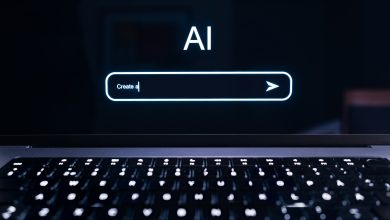
A typical day at the office is no longer filled with chatter of meetings and whiteboard sessions, but with dashboards and data visualizations. Artificial intelligence (AI) is changing the definition of business. Many leaders rush to implement the latest AI operations and become more productive and competitive. For the sake of being first, they may overlook building the best frameworks to withstand rapid growth and maintain structured data.
10 AI Business Frameworks You Should Know
Around 78% of businesses utilized AI in 2024, representing a 55% increase from 2023. Many organizations fail to plan properly before implementing the technology. AI is more architecture than algorithm. Without the proper processes, AI systems may fall flat.
Frameworks give business leaders a way to build confidence, provide consistency and measure success. Many AI projects fail because there is no framework for decision-making. Without one, teams may automate the wrong things, or nothing at all. It is not a technological shortfall, but a lack of alignment.
Leaders often overestimate what AI can do and underestimate where humans excel. Creativity, ethics and empathy cannot be automated. Business leaders need more than tools to drive AI-powered transformation. A good framework enables management to accurately determine which aspects of a task can and should be handled by AI and which require human input.
The best AI solutions blend automation but maintain the relationships and perceptions that drive results. These 10 frameworks help with organizing thinking so that AI strategy can deliver concrete value and responsible innovation.
1. AI Maturity
In any transformation, it is important to establish a baseline. The AI maturity model enables organizations to rate the maturity of their data, governance, and technical capabilities. Only 5% of businesses report financial returns from AI, suggesting that most businesses are still at lower levels of technology maturity.
This framework helps leaders identify their strengths and address weaknesses, enabling them to build a path forward for enterprise-level adoption.
2. Value Chain
Every AI strategy should first consider where technology can create the most value. The value-chain framework helps leaders identify the potential for AI within logistics, customer service and predictive maintenance. Mapping out processes and decision points allows companies to effectively utilize AI to improve margins, productivity and customer experience.
3. Business Process Fabric
AI is at its best when integrated fully into business processes. The business process fabric concept connects data, process mapping and process automation in one place to ensure business activities stay aligned across the enterprise. The combination of process mining and AI enables improved decision-making and infrastructure development, providing a measurable impact across the enterprise from the prototype.
4. Performance and Outcome
Most companies using AI are more worried about outcomes than reports. A performance and outcomes framework ensures projects align with an organization’s desired business goals. Some examples include lower costs, higher productivity, increased revenue or improved customer experience.
Use a few key KPIs to follow progress during implementation. Identify what works and drives return on investment.
5. AI Risk Management
Unlike static systems, AI systems face ongoing risks such as data drift, bias amplification and model evasion. The NIST AI Risk Management Framework provides a process to identify, measure and manage these problem areas. By embedding risk management early in your AI adoption, you’ll gain organizational resilience and be better prepared for regulatory acceptance.
6. AI Governance
Without some oversight, AI can turn into chaos. It’s crucial to determine who owns generated data, which person or team approves models and who is accountable if it all goes wrong. Governance keeps AI at an acceptable risk. Infringement of the prohibited use provision may result in a fine of up to 7% of global annual turnover under the EU AI Act.
At the policy level, governments are moving rapidly, with over 1,000 policy initiatives in more than 70 jurisdictions shaping trustworthy AI practices. Good governance provides leaders with a means to demonstrate their accountability and readiness to be held accountable.
7. Responsible AI
Training large AI systems can produce up to 300,000 kilograms of carbon emissions, adding a significant environmental toll. A responsible AI framework allows designers to create transparent, fair and accountable systems. Such setups should consider sustainable AI as a core component of the foundation.
Beginning with these values helps reduce biases and encourages compliance. Companies will increase trust from users and stakeholders in the long term. Ethics should be more than an afterthought — it should be the difference between your company and competitors.
8. Data and Technology Capability
AI systems need strong foundations. A framework that evaluates the data for quality, integration and scalability ensures systems support advanced AI modeling. Companies that industrialize their data pipelines and architecture are more likely to scale AI across business units.
Working through current and future needs before adopting AI company-wide gives you a long-term competitive advantage.
9. Change Management and Adoption
Even the best-defined strategy will only succeed if people are ready for it. A change management and adoption framework tries to explain to employees that AI is augmenting their work, not replacing it.
This framework focuses on communication, teaching and inclusivity. It helps teams develop a shared trust, familiarity with new workflows and increased confidence.
10. Ethical and Social Impact
AI transforms many aspects of daily life, so businesses must consider the impact of artificial intelligence. The OECD AI Principles focus on inclusivity, human rights and transparency.
With an ethical framework, businesses can determine if they can and should deploy AI. Leadership must incentivize employees to foster a culture that protects the brand’s reputation and public trust.
Build the Structure Before the System
Frameworks exist to provide organizations with a starting point for effectively adopting AI. To drive responsible AI, you must govern risk and practice ethics. Prepare your data while mapping what needs to be automated and what requires a human-centered approach. The result is the balance of innovation, responsibility and sustainability.
AI technology typically fails because its structure is off-kilter. Using these 10 frameworks allows leaders to remain accountable and ensure projects serve people while driving value for the organization. Start small, work smart and build a foundation that lasts for decades.




